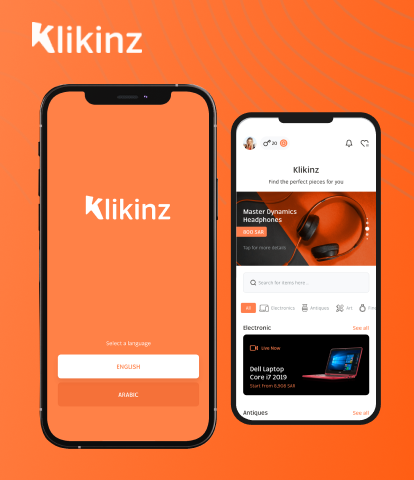To attract the best Laravel developers, you should ask interesting questions that allow you to evaluate technical skills, problem-solving abilities, and, finally, familiarity with Laravel features. This will allow you to make the right decision.
Assessing Laravel developers starts with how they have used the framework in the past, how they approach frequent development problems, and, ultimately, whether they could fit into your team. Remember the following questions as you weigh applicants’ experience and problem-solving competence.
1. How do you optimize performance in a Laravel application?
Performance optimisation typically entails introducing caching, writing appropriately optimised Queries or taking advantage of some of Laravel’s native caching systems. When developing the application, you can utilise query caching, write appropriately indexed database queries and cache-backed responses instead of relying on expensive database queries for every request.
2. How do you handle authentication in Laravel?
Laravel has native security implementations that ensure authentication. Developers should leverage the authentication system provided by Laravel (including but not limited to guards and policies), such as registration, login, and access control, for a secure and effective way to authenticate users.
3. How do you migrate databases in Laravel?
Laravel lets developers specify database migrations via Artisan commands that create and retain schema changes. It’s recommended that you run migrations, which keep database changes consistent, with php artisan migrate and version-control your database schema across the different environments.
4. What is middleware in Laravel, and how does it work?
Laravel’s middleware filters HTTP requests. Developers can define middleware classes that execute before an incoming request reaches a controller or after a request leaves a controller, using it to perform everyday tasks such as authentication and logging.
5. How do you manage environment configuration in Laravel?
Laravel uses environment files for configuration management. Use the .env file to store environment-specific settings and then retrieve them with the config() function to easily change them across your staging and deployment environments.
6. What is Laravel Artisan, and how do you use it?
Artisan is Laravel’s command-line interface, which allows developers to execute commands to help them with development, e.g., during iteration or debugging. Using Artisan commands such as php artisan migrate will automate mundane actions such as running migrations, seeding and tests.
7. Can you explain the concept of rate limiting in Laravel and how to implement it?
Rate limiting allows users to make only a certain number of requests in a specific period of time. When setting up an application’s routes, a developer implements Laravel’s rate-limiting features (defined in the RouteServiceProvider) to apply these restrictions to prevent abuse of an application’s resources.
8. What are Laravel Events and Listeners, and how do you use them?
Events and Listeners allow for a modular, decoupled event-driven architecture: Laravel developers create Events to signal when something noteworthy happens in the application and Listeners to deal with those events.
9. How do you handle file uploads in Laravel?
Laravel provides input features for handling inbound file upload: Laravel makes it easy to store file items. First, validate file inputs, then securely store files and handle paths with the help of Laravel file-handling features.
10. What is the Blade templating engine, and what are its benefits?
Blade is Laravel’s templating engine used for dynamic view rendering. Its key benefits are the ability to reuse templates to share the same component throughout your app, the simple and enabled syntax that’s integrated with Laravel, and the ease of building and maintaining view rendering when building complex user interfaces.
11. What is the purpose of Composer in Laravel projects?
Composer is a dependency manager for PHP. In Laravel projects, there’s a composer.json file that keeps track of PHP packages needed to run the application and their dependencies. Composer makes installing, updating, and removing these necessary back-end libraries a breeze.
12. How do you handle error and exception handling in Laravel?
Laravel provides defaults for many of these functions through the ExceptionHandler class. Developers can set custom error pages, capture exceptions as they’re thrown, and handle errors consistently to enable the user to recover from an exceptional situation while maintaining application stability.
13. How does Laravel’s Localization feature work?
Laravel has a localisation feature that allows developers to translate different features or even content for the website or application. Language files are stored separately from the ‘app/’ directory in the ‘resources/lang’ directory, and developers use the content provided in these files whenever they access information from the database.
14. Can you describe a challenging problem you faced in a Laravel project and how you resolved it?
Candidates should describe a single problem, such as a performance issue or a complicated feature that was requested, explore the approach taken in diagnosing the problem, implement a solution, and evaluate the outcome to demonstrate their problem-solving skills.‘app/’ directory in the ‘resources/lang’
15. Can you explain the process of deploying a Laravel application to a production environment?
Deploying a Laravel application requires environment configuration, server setup, database migrations, and other tweaks to increase performance. The deployment must be done securely and with an adjustment for the hosts’ environments.
16. Can you tell us about your background and how you got into web development?
Learning about a candidate‘s past can give some insight into their background and interest level. The candidate should be able to describe how they got into web development (education, previous projects, what made them want to be a web developer), their experience and education in the field (schools, certificates), and a little bit more about themselves.
17. How do you stay updated with the latest trends and technologies in web development?
Keeping up with the current work is essential to continue to grow. Interviewers should ask candidates about their approach to keeping up with what is going on in their field (e.g., reading blogs, forums, conferences, and professional communities).
18. How do you implement caching in Laravel to improve performance?
Caching is really important for better performance. As you hire dedicated laravel developer, they should report on Laravel’s caching systems with different drivers, such as Redis and Memcached, and strategies to increase the application’s speed for caching queries, views, and configurations.
19. How do you ensure your LaravSQL injection and XSS attacksel application is secure from common vulnerabilities?
Security is important. Candidates should describe how they would approach securing your application, including input validation, data and encoding, and how they would ensure no issues arise with SQL injection and XSS attacks.
20. What is your approach to managing Laravel’s database seeding?
Database seeding resolves the problem of populating test data. Developers need to describe how they employ Laravel’s seeder classes to seed and insert data into the database so that they can test features with realistic data.
21. Can you explain how you use Laravel’s task scheduling feature?
Task scheduling automates repetitive tasks. Developers must discuss how they used Laravel’s schedule method in the Console\Kernel class to define the schedule of the tasks and schedule commands to auto-process them and how they implemented the commands to accomplish things such as database cleanup or automatic email shipping.
22. How do you integrate third-party services or APIs into a Laravel application?
The use of third-party services can add functionality. Candidates should describe their strategy for bringing in external APIs or services (like Google Maps), detailing how they would manage authentication, making HTTP requests to the APIs, and managing responses to accomplish the application task in Laravel.








